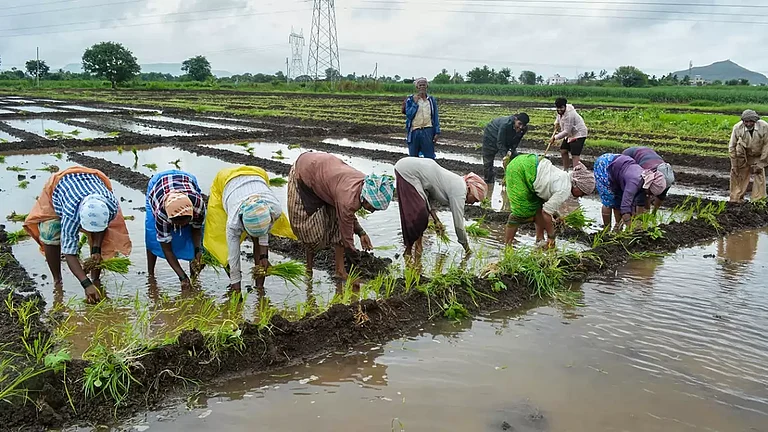The Indian Union Budget 2024–25 proposed the introduction of a Climate Finance Taxonomy (CFT) to guide and channel investments toward climate mitigation and adaptation efforts across sectors.
Why India’s Climate Finance Taxonomy Needs to Include Agriculture’s Mitigation Potential
India’s draft climate finance taxonomy is a welcome step—but excluding mitigation activities in agriculture could limit private capital flows and stall meaningful climate action in the sector
In line with this announcement, the Ministry of Finance (MoF), through the Department of Economic Affairs (DEA), has recently released a draft Climate Finance Taxonomy framework for public consultation.
The proposed framework outlines high-level objectives, guiding principles, and the design architecture of the taxonomy. It also defines a methodology to classify sectoral activities and projects aligned with India’s climate commitments under the Paris Agreement and its national development priorities.
The draft taxonomy marks a critical step toward establishing a robust green finance ecosystem in India, but it is essential that the framework meaningfully incorporates the realities of the agriculture sector.
Climate finance taxonomy is a structured system that classifies economic activities based on their contribution to climate goals. It creates a common language for investors, regulators, and policymakers, improving transparency and alignment in climate-related investments that can contribute to India’s Nationally Determined Contribution (NDC) commitments.
Climate action in any sector includes both climate mitigation and adaptation, but the current framework of the agriculture sector methodology has classified only climate adaptation/climate resilience activities as eligible for climate financing.
Though this is in line with India’s climate commitments, our belief is that if the taxonomy is adopted in its current form, it may limit the overall flow of climate investments into the agriculture sector.
As part of its voluntary NDC, India has committed to reduce the emission intensity of its GDP by 45% by 2030, compared to 2005 emission levels. After the energy sector, agriculture is the second-largest contributor (14%) to India’s GHG emission profile.
Livestock enteric fermentation, rice cultivation, manure composting, synthetic fertilisers, and crop residue burning are the largest contributors to agriculture-related emissions.
Since agricultural development is intrinsically linked to poverty alleviation and rural development in the country, the government has rightfully excluded this sector from any binding emission commitments.
Nevertheless, drawing from the country’s energy decarbonisation commitments, it has been pursuing multiple energy decarbonisation programmes in the agriculture sector (which consumes nearly one-fourth of the total electricity consumption in the country).
As climate financing practitioners with our ears close to the ground, we are seeing positive momentum behind multiple climate mitigation activities in agriculture. For example, we are witnessing increasing traction in bioenergy:
a) Biofuels – Enabled by a policy mandate for 15% mandatory blending of bioethanol with petrol, most sugar mills have set up distillation plants and are producing ethanol, supplying it to oil and energy companies like IOCL, BPCL, and Nyara.
b) Biomass-fed CBG plants – States such as Uttar Pradesh, Telangana, and Madhya Pradesh have approved numerous private sector projects for establishing compressed biogas (CBG) plants that utilise biomass as feedstock.
c) Household biogas plants – The implementation of biodigesters has also seen significant growth, supported by central government subsidy schemes like PM-KUSUM and state-level programmes, which have led to a notable increase in household biogas plant installations.
The current draft Climate Finance Taxonomy framework covers bioenergy under the energy sector, but there are other on-demand climate mitigation activities in agriculture which do not feature in the agriculture sector methodology. Biofertilisers, bio stimulants, and bio pesticides—almost all major agri-input players have introduced product lines and are continuously innovating. For example, seaweed-based bio stimulants are already established in the market. Additionally, organic fertilisers have become a key focus, with numerous FPOs actively involved in the manufacturing and sale of vermicomposting, neem cakes, and organic compost.
Another vital area is food loss avoidance. Through innovations in storage, logistics, and handling, small-scale and modular cold storage solutions have been developed, which farmers and farmer collectives can access. These solutions are vital for reducing food wastage and preventing distress sales, especially in the case of perishable produce.
We also see latent traction in the field for other climate mitigation activities within agriculture, such as plant-based proteins, waste-to-value circularity solutions like biochar, and low-emission animal feeds.
Additionally, multiple agriculture-based carbon projects are being implemented on the ground, and there are financing requirements for different stakeholders participating in these carbon projects. This presents an untapped demand for climate finance that should be addressed to foster further innovation and sustainability in the sector.
It is in this backdrop that the draft framework for the Climate Finance Taxonomy has been released for public consultation. The primary role of a climate taxonomy is to direct the flow of climate investments in the country. Once the taxonomy is finalised, it will be adopted by key sectoral and agriculture nodal agencies such as NABARD, SIDBI, and the RBI. However, the classification methodology proposed in the current draft framework for the agriculture sector leans exclusively on climate adaptation and climate resilience activities—climate mitigation is not considered in the taxonomy framework.
Given this context, if climate mitigation activities in agriculture do not feature in the Climate Finance Taxonomy (under the Agri Sector Methodology), these activities will not be recognised for climate financing by key sectoral agencies. Scaling up these activities is critical for climate action in the agriculture sector, and most of them have the potential to attract much-needed private investments into agriculture.
Hence, we believe that the climate taxonomy in its current form will not enable the flow of much-needed private investments into climate mitigation activities in Indian agriculture. Given the climate action potential and ongoing developments in agriculture, we believe the framework should include provisions that recognise climate mitigation activities in this sector, even though they do not contribute directly to India’s NDC commitments.
(The author heads ESG & Sustainable Finance at Samunnati. The views expressed in this article are personal and do not represent the opinions or positions of Outlook Business.)



